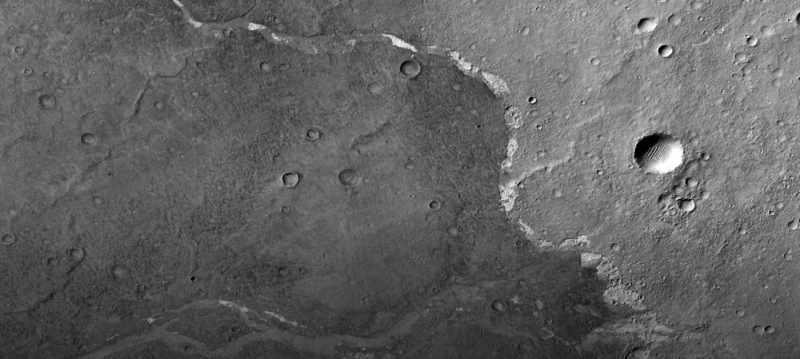The last of Mars’ liquid waters flowed about 2 billion years ago

Enlarge / The string of interrupted bright patches moving from top left to lower right is a channel filled with salt deposits. (credit: NASA/JPL-Caltech/MSSS)
By now, there's plenty of evidence that Mars had a watery past, and more data is coming in all the time. But that evidence doesn't necessarily give us a complete picture of Mars' past. Was the red planet covered in watery oceans, or was most of the water trapped as ice, with erratic seasonal melting?
This week, two researchers at Caltech-Ellen Leask and Bethany Ehlmann-helped provide a clearer picture of Mars' past by figuring out the likely behavior of the last liquid water on Mars and determining when it stopped flowing. Their secret was tracing salt deposits on the Martian surface.
Follow the saltThere are many different salts we've detected on the Martian surface, but the ones of interest here are chlorides (which probably include the sodium chloride of table salt). These are especially informative because they are the salts most readily soluble in water. So if there's any water around, these chloride salts would be dissolved in it. Any deposits of these salts currently present on the surface of Mars, then, were put there as the last water in that region of the planet dried out.
Read 10 remaining paragraphs | Comments